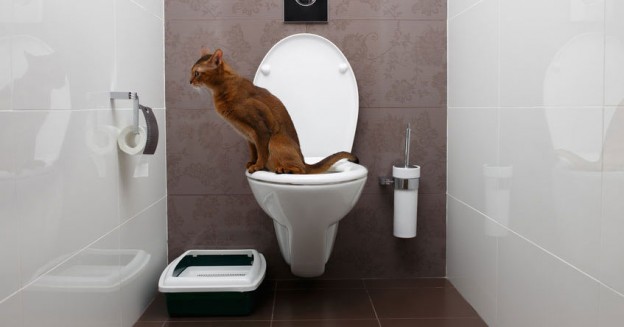This post following next pertaining to How to Dispose of Cat Poop and Litter Without Plastic Bags is pretty much remarkable. Have a go and draw your own findings.

Introduction
As pet cat owners, it's necessary to be mindful of exactly how we take care of our feline close friends' waste. While it may seem hassle-free to purge pet cat poop down the toilet, this practice can have damaging effects for both the setting and human wellness.
Ecological Impact
Purging pet cat poop presents hazardous microorganisms and bloodsuckers right into the water system, presenting a substantial threat to marine ecological communities. These impurities can adversely influence aquatic life and concession water quality.
Health Risks
In addition to environmental concerns, purging pet cat waste can likewise present health and wellness threats to human beings. Feline feces may contain Toxoplasma gondii, a parasite that can create toxoplasmosis-- a possibly extreme health problem, especially for pregnant women and people with damaged body immune systems.
Alternatives to Flushing
Fortunately, there are more secure and a lot more responsible methods to get rid of feline poop. Consider the adhering to choices:
1. Scoop and Dispose in Trash
One of the most usual technique of throwing away feline poop is to scoop it into a biodegradable bag and toss it in the garbage. Be sure to use a committed trash scoop and dispose of the waste without delay.
2. Use Biodegradable Litter
Opt for eco-friendly feline litter made from materials such as corn or wheat. These trashes are eco-friendly and can be securely gotten rid of in the garbage.
3. Bury in the Yard
If you have a backyard, consider hiding feline waste in a marked area far from vegetable yards and water sources. Make certain to dig deep sufficient to prevent contamination of groundwater.
4. Install a Pet Waste Disposal System
Purchase a family pet garbage disposal system specifically made for cat waste. These systems make use of enzymes to break down the waste, decreasing smell and environmental influence.
Conclusion
Liable pet dog ownership expands beyond giving food and sanctuary-- it likewise entails proper waste administration. By avoiding flushing pet cat poop down the toilet and selecting alternative disposal techniques, we can decrease our environmental footprint and shield human wellness.
Why You Should NEVER Flush Cat Poop (and/or Litter) Down Your Toilet
The Problem with Litter
The main function of litter is to solidify and adhere to your cat’s waste. While this makes litter excellent for collecting cat poop and urine, it’s also the exact property that makes it a nightmare when flushed down the toilet.
Cat litter can and will clog pipes. There is non-clumping litter, but it’s still quite heavy and can build up in pipes. This is true even of supposed “flushable litter.”
The problems only compound when the litter is already clumped into cat waste. Toilet paper is among the more flushable things, and even too much of that will clog a toilet.
The Problem with Cat Poop
Sewers and septic systems are designed with human waste in mind. The microbes that help break down human waste don’t work on cat waste. Additionally, cat poop plays host to the parasite Toxoplasma gondii.
When flushed, this parasite can enter the environment in places it was never meant to, posing a risk to pregnant women, their unborn children, and other people with compromised immune systems. While it might not seem possible, flushing cat poop can indeed introduce this parasite to the public water supply.
These reasons are why, even if you’ve trained your cat to go on the toilet and flush, which is possible, it’s still not a good idea. Also, pregnant women and the immunocompromised shouldn’t change litter, either.
How to Handle Litter
The best way to handle litter is to simply put it in a plastic bag and place it in the trash. Avoiding environmental risks and possible plumbing damage is worth the extra effort.
You can also invest in devices that seal away your cat’s waste in a separate compartment, so you don’t have to change the litter nearly as often. They’re also safer for pet owners because they limit the possibility of Toxoplasma gondii exposure.
Disposing of litter the old-fashioned way will ensure you won’t have to worry about any issues that flushing the waste can potentially cause.
Take Care of Clogged Pipes with Stephens Plumbing, Heating & Air Conditioning
The reasons you should never flush cat poop down your toilet are numerous, but sometimes the inevitable happens despite your best efforts.
Stephens Plumbing, Heating & Air Conditioning is ready to help if you’re experiencing litter-blocked plumbing. Whether you need us in an emergency or want to schedule regular maintenance, we’re here for you.
https://www.stephensplumbing.net/bathroom-plumbing/never-flush-cat-poop-down-your-toilet/

As a keen person who reads about How to Dispose of Cat Poop and Litter Without Plastic Bags, I thought sharing that excerpt was a great idea. Those who liked our blog posting please make sure you remember to pass it around. Thanks for going through it.
Book A Service Call